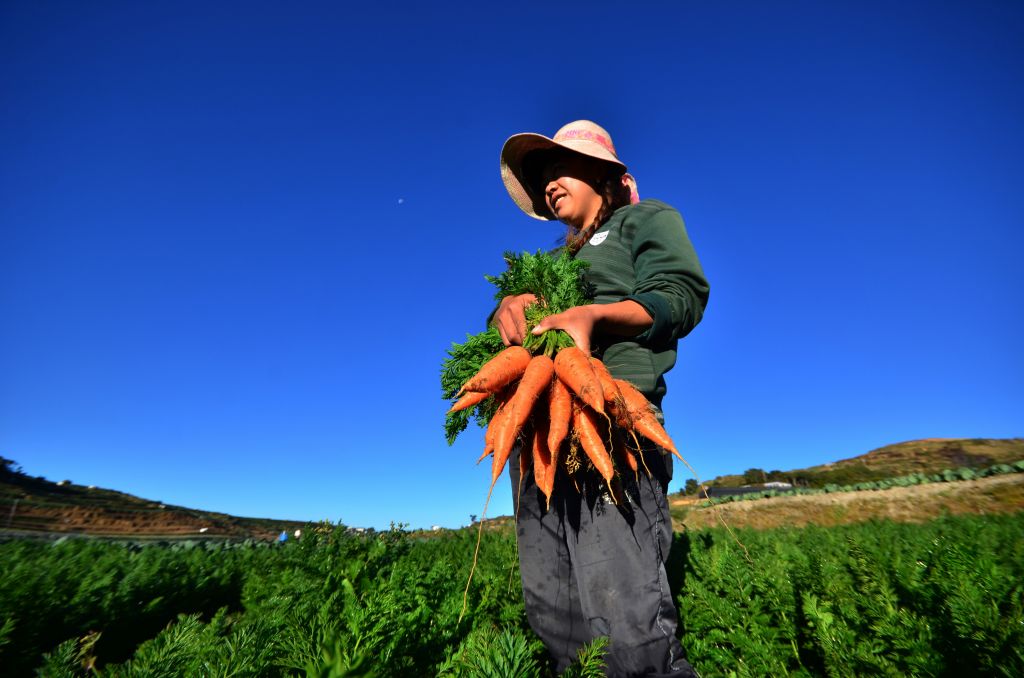Op-Ed
Natural Capital Investment Is Key to Rural Recovery and Resilience
Qingfeng Zhang 9 Apr 2021
The harsh health and economic impacts of the coronavirus disease (COVID-19) pandemic are being felt across developing Asia. As the region moves toward recovery, agriculture presents a major route to reducing poverty and food insecurity compared to other sectors.
Prior to the pandemic, agriculture accounted for a significant part of the economy for many emerging countries—7.7% in China, 12.7% in Indonesia, 7.3% in Malaysia, 8.8% in the Philippines, 8% in Thailand, and 14% in Vietnam. Since millions of rural migrants lost their jobs in cities and returned to rural homes for their livelihoods, rural development is now becoming vital to post-pandemic recovery. As experiences in Thailand and the Philippines have shown, investments in agriculture can help revive food production and create jobs following a crisis, and enable rural communities to recover.
Productive and sustainable transformation of agri-food systems is a key element in the successful transition from middle- to high-income status. This is always challenging. But as countries push for economic diversification, expand the use of modern technologies, and establish effective management of food supply during this pandemic, many countries in developing Asia are well-equipped to overcome the challenge.
In the past, farmers had few incentives to pursue sustainable agriculture and protect natural assets without incurring significant cost or loss of income. This was because of the disconnection between the retail price of food and the cost of production and distribution reflecting implicit environmental costs.
But now East Asia and developing countries in the Mekong have started introducing natural capital accounting such as gross ecosystem product (GEP) to attach a monetary value to nature, and applying eco-compensation or payments for ecosystems to provide incentives for farmers to change their behavior. These are critical to sustainable transformation of the agricultural value chain, and can be replicated to other regions including central and south Asia.
In February 2021, China unveiled a new government body for the promotion of rural vitalization as the world’s most populous country shifted its policy focus to further enhancing natural capital investment and boosting rural areas. The same week, China’s top leaders outlined priorities and tasks for the next-stage of reform at a key meeting, which stressed efforts to explore a market-based, sustainable way to realize the value of ecological products.
All of these actions are a move in the right direction for a rural recovery, while protecting the environment and natural resources. The wider region could consider how to incorporate similar approaches in their recovery plans.
Looking forward, several opportunities exist to continue the drive toward a more resilient and sustainable recovery in rural Asia.
Agribusiness marketplace. ADB is working with its developing members to establish an agribusiness marketplace on a digital platform. This platform will integrate modern advanced technologies, such as the Internet of Things, artificial intelligence (AI), big data, cloud computing, and blockchain, to digitalize agriculture value chains. This will reinforce food security and strengthen utilization, preservation, and improvement of natural capital. It will also help in solidifying transparency and traceability to improve food safety. At this marketplace, stakeholders of different sizes will have better channels to exchange information, sell products, arrange logistics, obtain financing, participate in training, and acquire third-party services, such as branding, certification, new product design, as well as professional assistance in legal, contracting, accounting and taxation issues.
Sustainable finance. Small and medium-sized enterprises (SMEs), including primary producers, dominate the food system. They are typically at a disadvantage when accessing finance, owing to opacity, under-collateralization, high transaction costs and lack of financial skills. Bank credits are the main source of external capital for SMEs. They need better access to alternative financing, such as equity finance, corporate bonds issuance, and mezzanine finance.
Incentive mechanisms. While there is growth in the adoption of eco-compensation or payments for ecosystem services in rural areas, the current incentive structures still encourage unsustainable short-term behaviors that deplete natural capital. This is a complex area requiring a suitable mix of appropriate “carrots, sticks, and narratives” to change the way that markets work (e.g., sustainable financing and payments for ecosystem services), to enact smart policies and regulations, and to change social norms through information disclosure and education.
ADB has established a working group to expand upon experiences in China and the Mekong subregion through a regional natural capital lab. The lab is designed as a living and virtual platform to incubate, accelerate, and expand natural capital investment, which will prioritize the support for greening of the agriculture value chain in developing Asia. The lab will leverage existing accounting tools to quantify the ecosystem service value of green agricultural value chains, strengthen eco-compensation or payments for ecological services to incentivize behavior change among small farmers, and establish a financial facility to convert ecosystem value or assets into the revenue model of agribusiness.
Our experience during COVID-19 has demonstrated the resilience of agriculture and its enormous value in driving economic recovery. The pandemic has also shown the importance of preserving the harmony among natural assets. Combining these two lessons underlines the need to transform agri-food systems so that they operate in a sustainable way. This transformation can be considerably enhanced by the use of digital technology and eco-compensation mechanisms. ADB’s natural capital lab and the associated financing facility would catalyze much-needed investment to achieve this transformation.
Author

Qingfeng Zhang
Chief, Rural Development and Food Security (Agriculture) Thematic Group, ADB
This Op-Ed is reproduced from Asian Development Bank.


